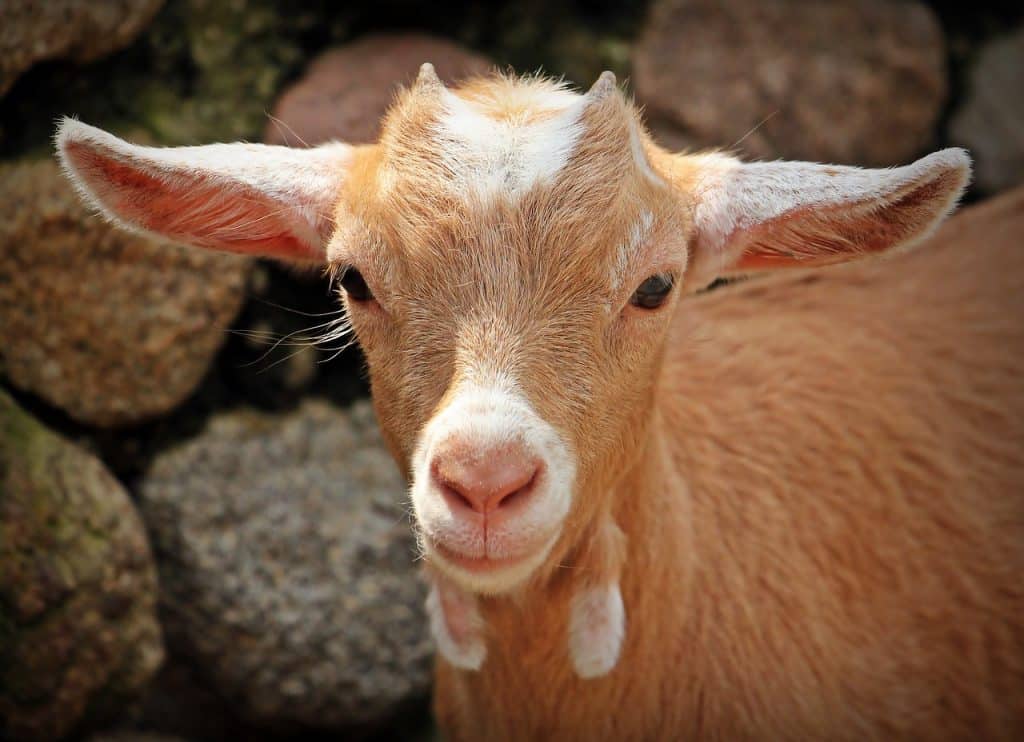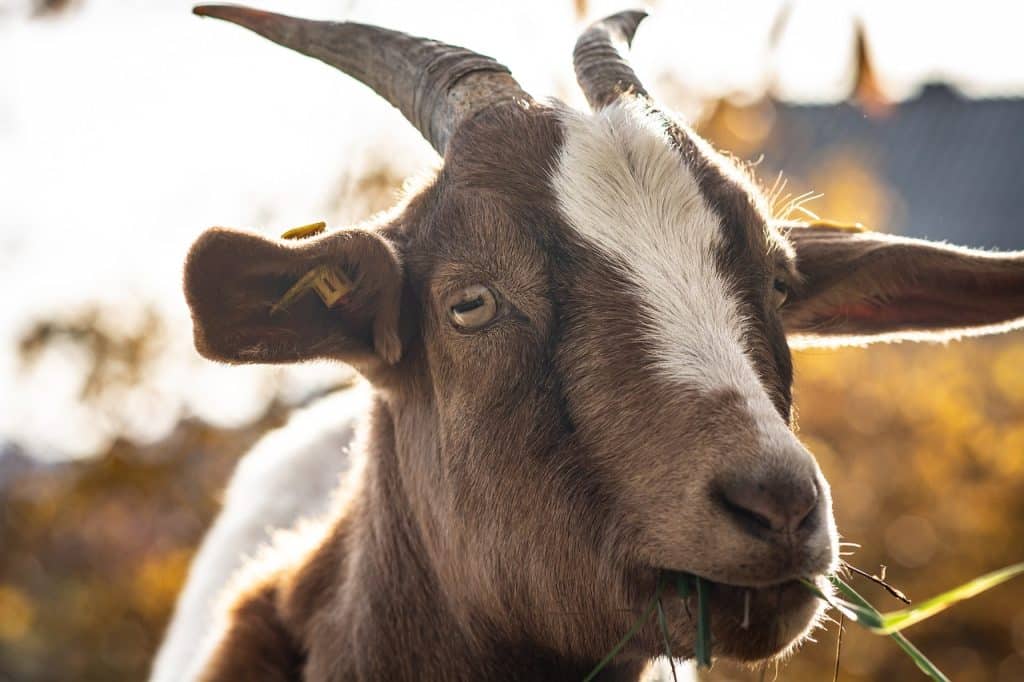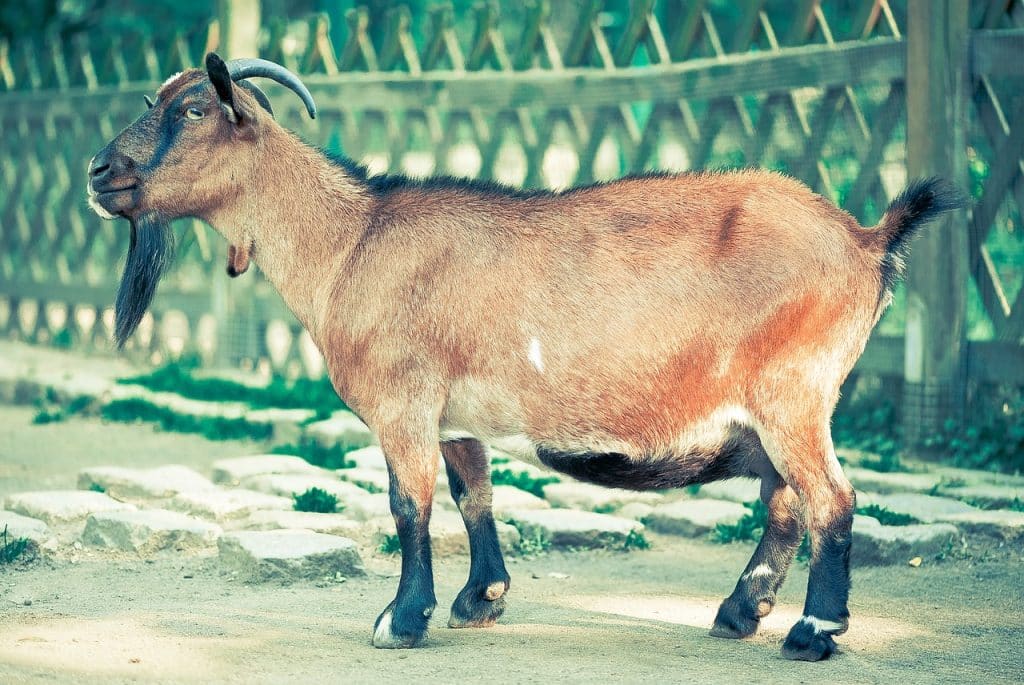
LaMancha is a great choice if you’re looking for a dairy goat. You might mistakenly believe that this breed is Spanish because of their Spanish names. LaManchas, American purebred goats, are bred to produce milk.
We will tell you everything you need to know so that you can decide if this is the right breed for you.
Here are some quick facts about LaMancha
| Species Name: | Capra aegagrus hircus |
| Family: | Bovidae |
| Care Level | Simple |
| Temperature: | Multifunctional |
| Temperament: | Docile |
| Color Form: | Any color found in goats |
| Lifespan: | 7-10 Years |
| Size: | Maximum 130 Pounds |
| Diet: | Herbivorous |
LaMancha Goat Overview

LaMancha is one of the most beloved dairy goat breeds. It is a prolific milk producer and has high butterfat.
LaMancha, like all domestic goats, comes from the Capra Genus. This breed was first bred in Oregon. It has a distinctive pair of short ears that makes it easy for goat breeders to differentiate it from other breeds. In the 1950s, this goat was recognized as a distinct breed.
The LaMancha’s popularity can also be attributed to their toughness. These goats are adaptable to almost any environment. They are gentle and easygoing. They can even be kept as pets by some people.
What is the cost of LaMancha goats?
LaMancha prices are just like any other breed. It all depends on availability, quality of parents, and breeder. A LaMancha buck of high quality can be priced between $400 and 600.
The Typical Behavior and Temperament
LaMancha’s temperament makes it one of the most popular dairy goat breeds. They are easy to care for and can show affection when socialized well. People looking to adopt a goat as a pet will love their curious and docile nature.
LaManchas are also inclined to curiosity and cleverness. Because of their intelligence, you need a fence strong enough to keep them in place.
Appearance and Varieties

LaManchas are known for their distinctively short ears (elfin or gopher style).
The ‘gopher’ label is given to an ear that measures approximately 1 inch and has little or no cartilage. The ear’s edge must be turned up or down. To be eligible for registration, a LaMancha buck must meet these requirements.
Elf ears can be as big as 2 inches. They should curve up and down.
A mature buck must be at least 155 lbs and stand at least 30 inches at its withers to be considered a LaMancha. They do, however, must weigh at least 130 lbs and measure at least 28in at the withers.
There are many colors available for this breed. Their coats are usually short and sleek. LaManchas are known for their strong legs and straight backs.
LaMancha goats: How to take care of them
LaManchas can be extremely agile even by goat standards. This breed’s intelligence and curiosity can make it difficult to put a fence around them.
A fence that is strong and secure will not only keep your animals safe but also stop predators from getting into your pen. Experts recommend fences at least 5 feet in height.
Wire fences are the most efficient when it comes to fencing material. Because the wire is tough and can withstand constant chewing and leaning, it is the most effective fencing material.
Are LaMancha goats compatible with other pets?
LaManchas are docile, which means they are unlikely to cause trouble. They can live peacefully with most animals, provided they don’t see them as prey.
How to feed your LaMancha goat
First, ensure that your LaManchas have clean water. These goats can consume up to 10 liters of water per day. When they produce milk, their water consumption is even greater.
It is vital that they have access both to food and forage. LaManchas can eat weeds and leaves if left to their own devices. If you can afford it, let them have pasture. This allows them to eat what they love while getting exercise.
Alfalfa Hay is the best choice for free feeding when it comes to feeds. Alfalfa hay is high in calcium, which makes it a good choice for high-quality milk production. Alfalfa pellets are a better option than hay because it is more expensive.
Supplements are essential for the healthy development of LaMancha goats. This is especially true when natural pastures might not contain the necessary minerals that these goats require.
As long as your goats are fed high-quality food, you can provide trace minerals to them. You must ensure that the mineral supplements are appropriate for goats and cattle. Avoid giving copper-deficient supplements to sheep. Copper is toxic to sheep, even though it is essential for cows and goats.
LaMancha can also eat fruits and vegetables.

Keeping Your LaMancha Goat Healthy
LaManchas, as we have already mentioned, are extremely hardy. They do require regular deworming and trimming of the hoof, just like any other domestic breed. Their ears are not very protected from the elements so it is important to regularly have them checked for signs of infection. Schedule regular visits with your vet.
Breeding
LaManchas usually come into season in fall or winter. They are in heat during this time for about 1-2 days every 21 until they are successfully mating.
After successfully mating, they enter a 155-day gestation phase, during which they give birth to twins or triplets.
Although does can go into heat as early as 5 months of age, it is best to wait until 8 months to give birth. They are already well-developed to handle pregnancy and childbirth. If a LaMancha does display these signs, you will know she is in heat.
- Swollen rear end
- Mucus or discharge signs
- Unusual bleating
- An increase in the interest in dollars
However, some breeders choose artificial insemination. Because they have complete control over the breeding process, this is a good option.
Are LaMancha Goats suitable for you?
It all depends on what you need. LaManchas make a great choice if you’re looking for a goat to milk. Because of their friendly disposition, they make excellent pets.
Conclusion
It can be easy to assume all goats are the same. Different breeds exist for reasons. La Mancha is an excellent choice for anyone looking for a dairy goat who can adapt to any environment. Their friendly nature and curiosity make them great pets.
Why don’t LaManchas have ears?
LaMancha Goat Characteristics The pinna-reducing gene is dominant in LaManchas: goats with two such genes have a very little visible ear (gopher-type), whereas goats with only one such gene have somewhat longer residual pinnae (elf-type). The dominant gene ensures that the trait is handed on to the vast majority of kids.
What are LaMancha goats used for?
The LaMancha is a trustworthy dairy goat that consistently produces high-quality milk with high butterfat and protein levels. The LaMancha breed has the benefit of being able to milk for two years without being freshened.
What is the greatest-tasting goat breed?
Bengal, black This goat is said to be the greatest breed in terms of meat quality and flavor. It is popular in both domestic and international markets due to its tight body construction and origin in Bangladesh. The Black Bengal, being one of the dual-purpose goat breeds, has a high reproductive rate.
What kind of goat doesn’t have ears?
Goat of La Mancha As weird as it may sound, this kind of goat with no ears really exists! Meet the LaMancha goat, a sweet breed with no or few external ear flaps. Everything you need to know about this strange species is provided here. LaMancha goats have unique short ears known as “gopher ears” or “elf ears.”
Do LaMancha goats get eaten?
Even better, our foraged young lamanchas taste fantastic. But, why are you eating Lamanchas,
which are dairy goats?
Males and females are equally likely in goats, as they are in humans.
What is the finest meat goat?
Goats from South Africa Boer goats are the most often utilized meat goat breed. They are often muscular and stocky, which is ideal for producing the tastiest meat. Boer goats gain weight quickly, develop large muscles (meat), are extremely reproductive, and frequently give birth to many children at the same time.
Which country consumes the most goat meat?
Goat meat is most popular in Africa, South America, Central America, the Middle East, India, Australia, and New Zealand, although it is also popular in Europe. More people eat goats than chicken or beef, and, unexpectedly, goat milk is more popular globally than cow’s milk.
Who should not consume goat meat?
Cancer danger Smoked, salted, or preserved goat meat may raise the risk of cancer. According to the International Agency for Research on Cancer, daily consumption of red meat, like other red meats, can raise the risk of colorectal cancer by 18%.
What distinguishes LaMancha goats from other breeds?
Lamancha goats are possibly the most unusual goat breed, distinguished by their extremely small ear pinnae. They are also noted for their great milk output, comparatively high butterfat content in their milk, and friendly disposition.